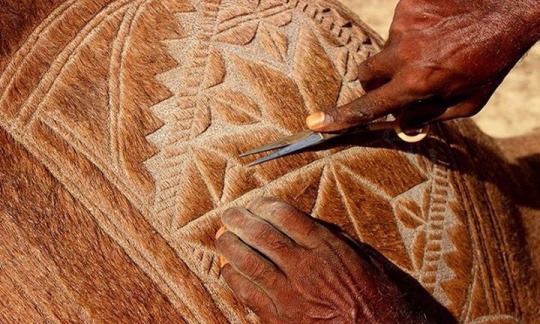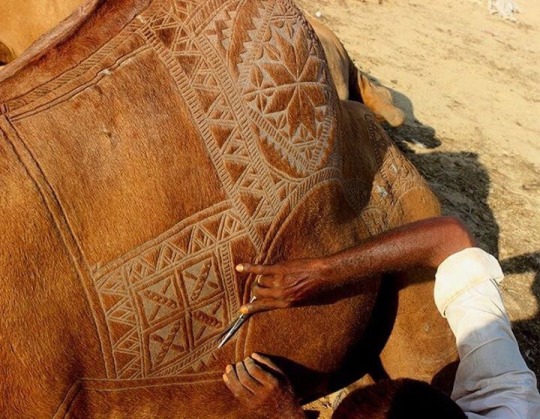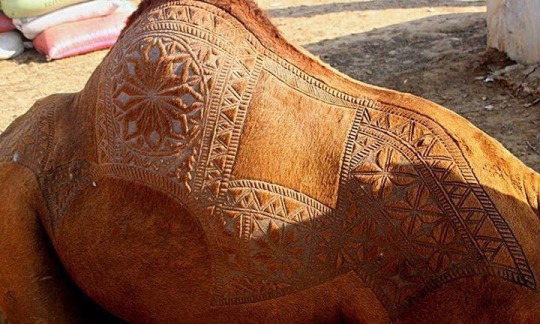Photo




Eid Mubarak: The art of camel barbering in Pakistan.
275K notes
·
View notes
Video
134K notes
·
View notes
Photo


Body Armor for a Dog (1967) HR Giger
7K notes
·
View notes
Photo

A boy waits to sell rose petals to Hindu pilgrims in Allahabad, India on August 4, 2016. (Rajesh Kumar Singh/AP)
24K notes
·
View notes
Text
“If autism isn’t caused by environmental factors and is natural why didn’t we ever see it in the past?”
We did, except it wasn’t called autism it was called “Little Jonathan is a r*tarded halfwit who bangs his head on things and can’t speak so we’re taking him into the middle of the cold dark forest and leaving him there to die.”
375K notes
·
View notes
Photo










Something good in this world…
315K notes
·
View notes
Photo

Outtake from Vanity Fair’s Portraits of Coachella, 2015. Photo by @brantleygutierrez.
4K notes
·
View notes
Photo





Yakutsk, Russia. Coldest city on earth.
15K notes
·
View notes
Photo

Andras Picture this: Andras is a demon with a human body, wings, and an owl’s head. And he rides a wolf. And carries a saber. He sows discord among people, harnesses anger, and sometimes just straight-up kills people.
135 notes
·
View notes
Photo







The beautiful Cae Mabon in north Wales looks like a real fairytale village. All the buildings are made out of sustainable local materials, like wood, earth, clay and straw.
4K notes
·
View notes
Photo



Gregorian Chants: Click here to listen to some.
344 notes
·
View notes
Note
Tell me about the domestic house cat.
Long ago in a kingdom by the Nile, a people cried out to their gods in anguish. A plague of rats, rats and mice and vermin of every shape, had devoured the grain and robbed the people of their dinners.
One god heard them, Bast, and tasted the meat and smoke of their offerings. She went up into the desert and found a pride of lions.
“Give unto me your smallest cub,” said the goddess, “that I may make an end of this plague.”
“Goddess,” said the lionesses, “surely you deserve the strongest and largest of our young for this divine mission.”
But Bast paid no heed, and took with her the weakling cub, so much smaller than her brothers and sisters.
“Blessed are thee, small daughter of the lionesses, above all others. Though you are small, you shall be brave. Once thought weak, you will be made strong, and entire kingdoms will sing songs of your greatness.”
And such is the wisdom of the gods, who make their greatest triumphs out of those who seem most unworthy. The small lion became a cat, with a goddesses blessing and a hunter’s heart, and soon the waters of the Nile ran red with the blood of the vermin.
For the smallest of lions is still a lion. For a small hunter is still a hunter. And the least among us are not to be underestimated.
5K notes
·
View notes
Photo

Spent the weekend in the Wallowas climbing up granite and drinking whisky by the lake.
6K notes
·
View notes
Link
An interesting linguistic typology study finding that sound symbolism is more common than we’d assumed. Excerpt from a good summary of the study in the Washington Post:
If you visited Iceland and asked someone what they called the smelling organ in the middle of their face, they’d tell you, nev. In Japan, it’s hana. To Sar speakers in southern Chad it’s kon, and among the Zuni tribe of the southwestern United States. it’s noli. In fact, you could go to more than 1,400 places around the world, question speakers of more than 1,400 different languages, and hear 1,400 words that contain the sound “n.” But all of them mean the same thing: nose.
That’s one of the findings of a sweeping study in the Proceedings of the National Academy of Sciences Monday, which found evidence of strong associations between the sounds in words and the ideas they represent in completely unrelated languages from all corners of the world. Despite a long-standing assumption in linguistics that the sounds we pick to signify certain concepts are arbitrary, the researchers argue that at least some associations are more universal than you’d think. …
A series of studies starting in 1929 have documented what’s called the “bouba/kiki” effect: People from societies across the world almost universally associate round shapes with the made-up word “bouba” and spiky shapes with the non-word “kiki.” …
Christiansen’s work pushes sound symbolism back to the forefront. He and his team, which included statisticians, neuroscientists, physicists and computer scientists, examined the words for 100 concepts in more than 6,000 languages in search of commonalities. They weren’t looking for universal rules — just examples of associations that popped more often than you’d expect due to pure chance. … To eliminate the influence of geographic relationships, shared sounds would only be considered symbolic if they appeared in languages from at least three of the world’s six large and relatively isolated areas: North America, South America, Eurasia, Africa, Papua New Guinea and the Pacific islands, and Australia. …
For a few of Christiansen’s concepts, the explanation appears straightforward. The “n” in nose (andnev and hana and kon and noli) is nasal, requiring that we speak through the very organ we’re trying to describe. Things that are small make high-pitched, squeaking sounds, just like the “i” in tiny, sagheer (Arabic) and liten (Norwegian). For other associations, the link between signal and signified is more opaque.
This doesn’t mean that Saussure was completely wrong about arbitrariness. Though words like nose may share some commonalities, most of the terms in the average adult’s 80,000-word vocabulary represent abstract concepts that aren’t easily represented with concrete sounds. When words for the same concept do resemble each other, it is usually a sign that they share an etymological root.
Read the whole article.
Here’s the academic paper, Sound–meaning association biases evidenced across thousands of languages by Damián E. Blasi, Søren Wichmann, Harald Hammarström, Peter F. Stadler, and Morten H. Christiansen.
See also the bouba/kiki effect and this post from Literal Minded on trying variants of the bouba/kiki experiment yourself.
1K notes
·
View notes
Photo

Probably why beluga whales were mistaken as mermaids. (Source)
51K notes
·
View notes








